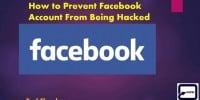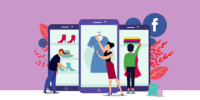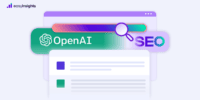Facebook Ad Auction Vs. Reach And Frequency Buying: Bidding And Buying Models Explained
In the realm of digital marketing, understanding the nuances of various advertising models is vital for businesses striving to maximize their online presence. Among the most prominent platforms for such marketing efforts is Facebook, which offers diverse ad buying models, each with unique benefits and strategies.
Two noteworthy models are the Facebook Ad Auction and Reach and Frequency Buying. The former is an automatic process designed to optimize advertisers’ bids, ensuring they reach their target audience efficiently.
The latter, on the other hand, gives advertisers more control over their ad campaigns, enabling them to determine the frequency of ad exposure to their selected audience.
This article aims to elucidate the key differences between these models, provide practical tips on how to leverage them effectively, highlight successful case studies, and offer guidance on selecting the most suitable model depending on the specific needs of a business.
Understanding the Basics of Digital Marketing
Delving into the rudimentary concepts of digital marketing, it becomes evident that this multifaceted field intertwines various aspects such as search engine optimization, content marketing, social media marketing, and pay-per-click advertising to create a comprehensive online presence.
Each component is significant and contributes to the overall effectiveness of a digital strategy.
Search engine optimization, for instance, focuses on enhancing website visibility, while content marketing aims to generate valuable content to attract and retain an audience.
Social media marketing, on the other hand, capitalizes on the power of social platforms to reach wider demographics.
Pay-per-click advertising, however, offers a robust method to drive traffic to websites.
Understanding these components provides a foundation for comprehending more complex topics, such as Facebook ad auction versus reach and frequency buying.
Key Differences Between Facebook Ad Auction and Reach and Frequency Buying
Understanding the key disparities between the prevalent social media advertising strategies and the method that involves determining the number of potential customers and the frequency of interaction is crucial for effective marketing planning. Two significant methodologies include Facebook Ad Auction and Reach and Frequency Buying.
-
Facebook Ad Auction:
- This method involves marketers bidding for ad space.
- The highest bidder does not necessarily win, but the one that provides the most value to the target audience.
- This strategy emphasizes relevance and quality of advertisements, not just monetary investment.
-
Reach and Frequency Buying:
- This approach allows advertisers to set a specific reach and interaction frequency for their campaigns.
- It provides more predictability and control, enabling marketers to ensure a certain level of exposure for their ads.
Understanding these differences facilitates informed decision-making in social media advertising strategies.
How to Effectively Use Facebook Ad Auction
Mastering the utilization of social media ad space bidding can significantly enhance a marketer’s ability to reach their target audience. Facebook Ad Auction, an automated process, tailors ad dissemination to maximize value for both parties.
Effectiveness revolves around understanding key elements: bid, ad quality, and estimated action rates.
A bid represents the advertiser’s value on the ad, influencing the likelihood of its delivery. Ad quality, measured by user feedback, can increase or decrease an ad’s reach. Estimated action rates project the likelihood of a user interacting with an ad.
By optimizing these variables, marketers can enhance ad performance. This optimization, coupled with constant monitoring and adjustment, is crucial in efficiently using Facebook Ad Auction to the marketer’s advantage, thus achieving the desired reach and engagement.
How to Maximize Reach and Frequency Buying
Optimizing the utilization of digital marketing strategies entails a thorough knowledge of how to effectively maximize reach and frequency buying.
Reach and frequency buying on platforms such as Facebook allows advertisers to control the number of times a particular ad is shown to a specific audience over a set period. This requires a careful understanding of the target audience and a strategic approach to scheduling ad displays.
One effective strategy is to incrementally increase ad frequency during peak engagement times. This maximizes ad exposure to the intended audience.
Furthermore, utilizing analytics tools to track audience engagement can provide valuable insights into optimal times for ad display. This evidence-based approach can significantly improve the effectiveness and efficiency of reach and frequency buying.
Case Studies: Successful Use of Each Model
Examining a variety of case studies reveals the successful application of different strategies in digital marketing, highlighting the effectiveness of each model in specific scenarios.
One case study involves a global e-commerce brand that utilized Facebook’s ad auction model to drive sales. By optimizing for conversions, the brand experienced a significant increase in revenue.
Alternatively, a national retailer opted for the reach and frequency buying model to increase brand awareness. The strategy resulted in improved brand recall and a higher volume of store visits.
These cases underscore the potential of both models, suggesting that the optimal choice depends on the individual goals and needs of the marketing campaign.
| Case Study | Model Used | Outcome |
|---|---|---|
| Global E-commerce Brand | Ad Auction | Increased Sales |
| National Retailer | Reach and Frequency | Improved Brand Recall |
Tips for Choosing the Right Model for Your Business
Navigating the digital marketing landscape requires a keen understanding of the various models available and the discernment to select the most appropriate one for your business needs and objectives. To choose between Facebook ad auction and reach and frequency buying, careful evaluation is necessary.
Consider the budget, campaign objectives, and flexibility required. The ad auction model provides a competitive platform for businesses with limited budgets, focusing on cost-effective strategies. Conversely, reach and frequency buying is suitable for larger campaigns needing guaranteed impressions and a predictable cost.
Additionally, the level of control over campaign pacing and audience exposure must be considered. Ultimately, tailoring the choice to your company’s specific requirements helps to optimize advertising outcomes.
Frequently Asked Questions
What are the potential disadvantages of using Facebook Ad Auction?
Potential drawbacks of utilizing Facebook Ad Auction may include unpredictability of costs due to competition in bidding, potential for overspending, and the necessity for continuous monitoring and adjusting of advertising strategies.
Are there specific industries or businesses that benefit more from Reach and Frequency Buying?
Industries or businesses that benefit more from reach and frequency buying typically include those with larger budgets and a need for predictable, controlled campaigns, such as automotive, film, and consumer packaged goods sectors.
How can I track the performance of my ads on both Facebook Ad Auction and Reach and Frequency Buying?
Ad performance on Facebook Ad Auction and Reach and Frequency Buying can be tracked through Facebook’s Ads Manager. It provides detailed analytics, including reach, impressions, click-through rates, and conversion rates for all active campaigns.
Can I use both the Facebook Ad Auction and Reach and Frequency Buying models simultaneously?
Yes, it is possible to utilize both Facebook Ad Auction and Reach and Frequency buying models simultaneously. However, careful strategizing is essential to ensure optimal performance and avoid cannibalization of campaign outcomes.
What are some common mistakes businesses make when using these Facebook ad buying models?
Common errors in utilizing Facebook ad buying models include inadequate budgeting, lack of diversified ad content, targeting too broad or narrow audience, neglecting ad frequency management, and failure to analyze performance metrics.









